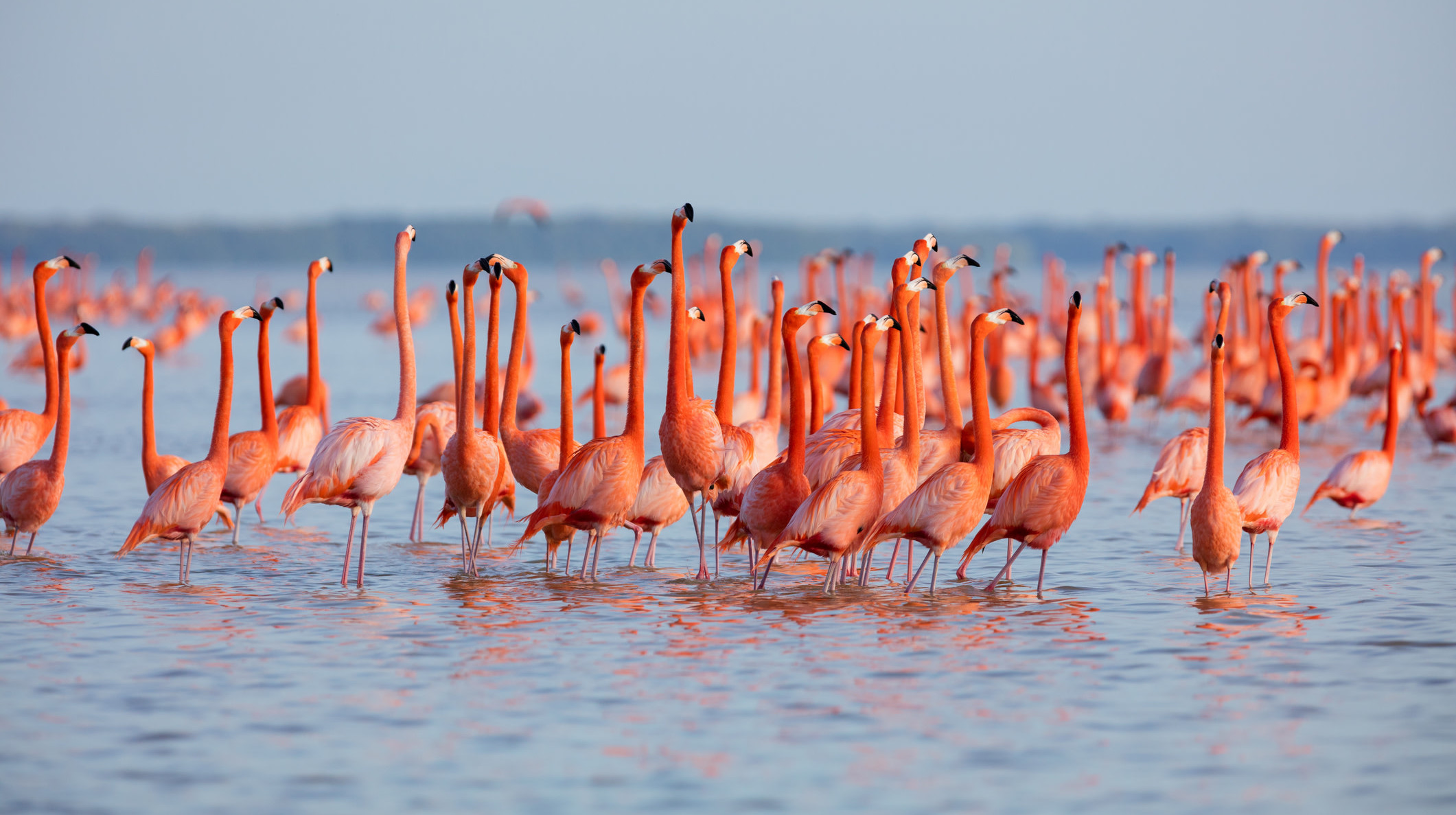Never Trust A Really Pink Flamingo
All flamingos, presumably, were created equal, but not all of them are equally pink. This is something you may have noticed if you see a flock (also known as a flamboyance) at the zoo and, if you are like me, chalked it up to genetic differences, like the way some golden retrievers are less golden than others. But it is not the case! Scientists of the University of Exeter in the UK, the Guardian reports, have discovered that the pinkness of a flamingo's plumage comes from carotenoids in their food, which is mostly algae. The more carotenoids a flamingo eats, the brighter pink it will be.
If, however, there is a limited amount of algae, then the flamingos in a flamboyance will have to fight amongst themselves for enough to eat. There's a lot of pushing and shoving, and the scientists observed that the pinker flamingos do more of the shoving.
"A healthy flamingo that is an efficient feeder—demonstrated by its colourful feathers—will have more time and energy to be aggressive and dominant when feeding," Dr. Paul Rose, an Exeter zoologist (with a perfect last name for studying flamingos) explained.
The scientists published their findings in the journal Ethology and suggested that flamingos in captivity should be fed across as wide an area as possible. That way, they won't have to fight for space to eat and everyone will be equally pink. There's probably a metaphor for humans in there somewhere.
